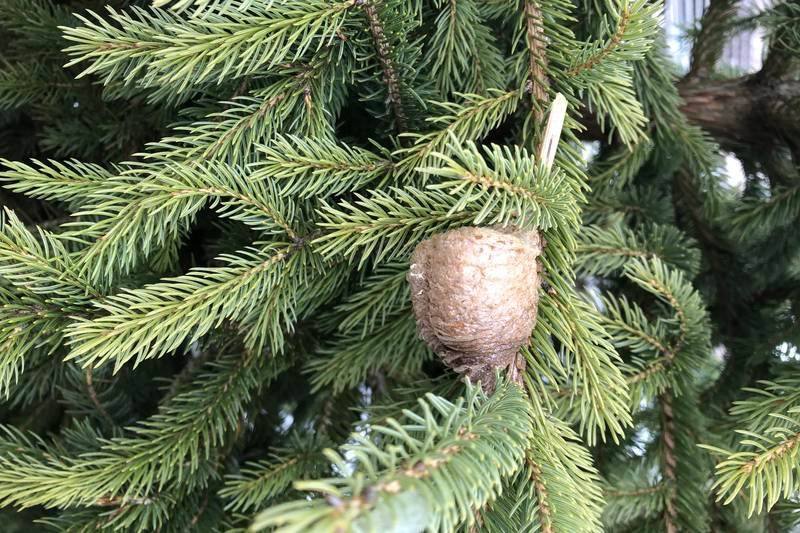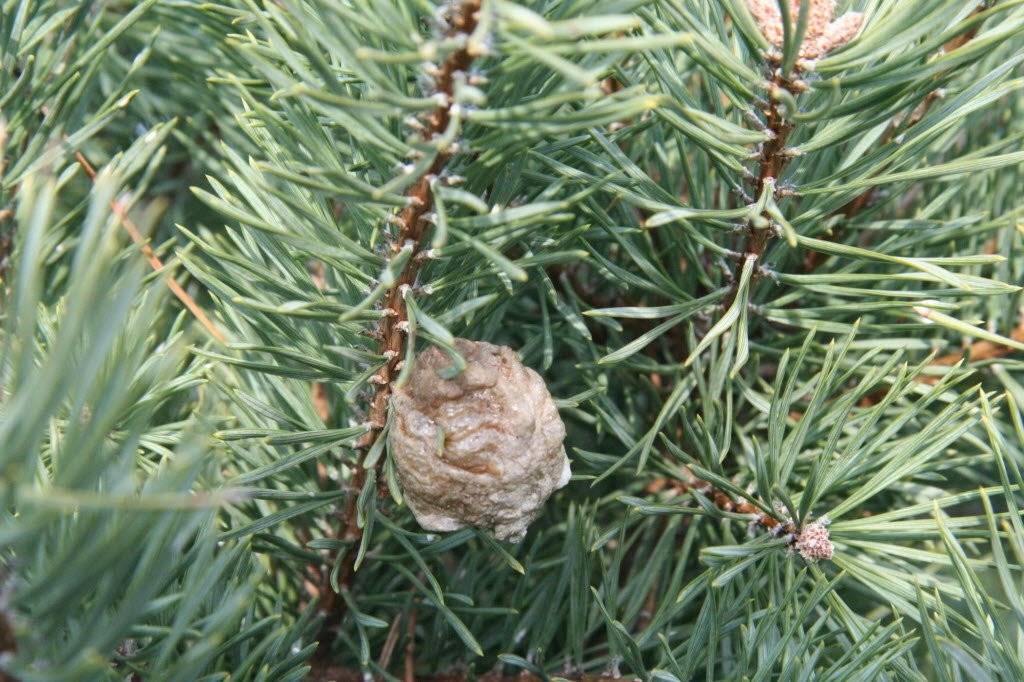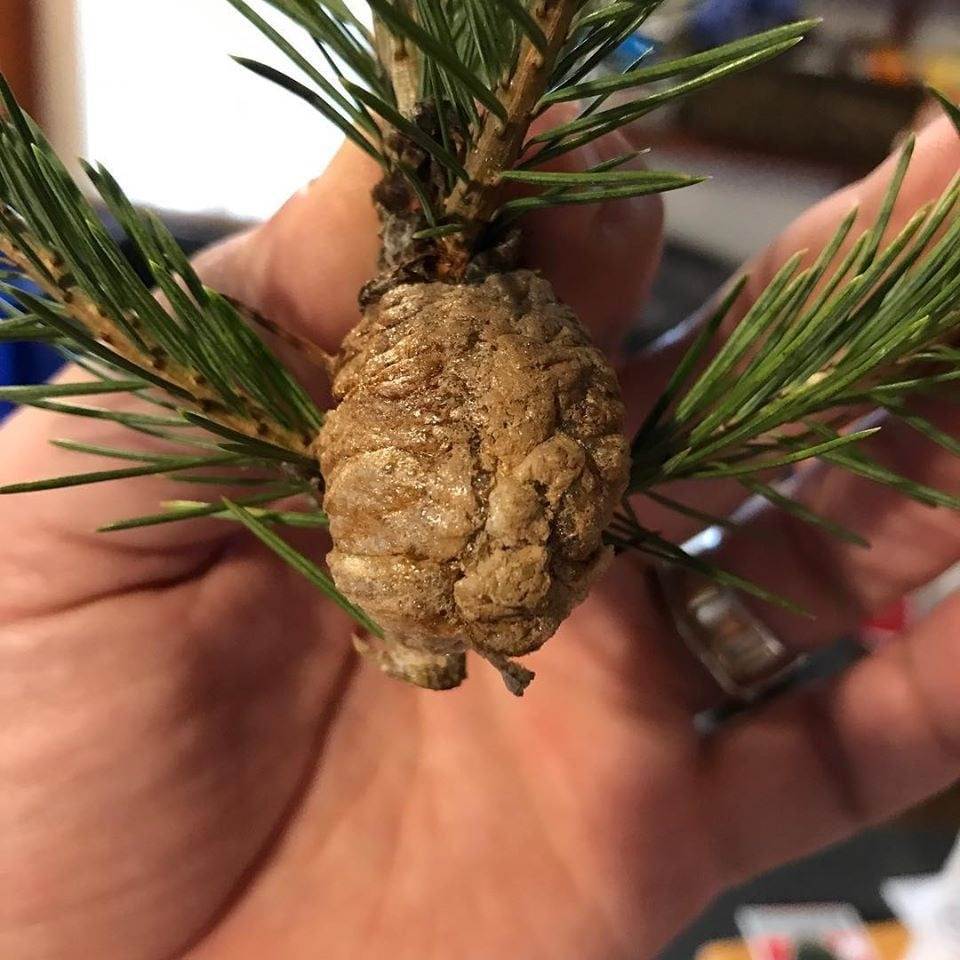The tradition of bringing a Christmas tree into our homes is a time-honored symbol of festive joy. However, what if your tree comes with unexpected guests? It’s the mantis eggs, nature’s surprise nestled among the branches. They are the eggs of praying mantises, which are insects that belong to the order Mantodea.
Praying mantises are known for their elongated bodies, triangular heads, and raptorial forelegs that they use to catch and hold their prey. They can be found in many parts of the world, and have different colors and shapes depending on their habitat and species.
Signs Of Mantis Eggs On Christmas Trees
- Foamy Sacs: Mantis eggs are often encased in foamy sacs, resembling a substance similar to Styrofoam. These sacs, called oothecae, are typically brown and can be found attached to branches.
- Small, Oblong Shapes: Keep an eye out for small, oblong shapes on the branches. Mantis egg cases are about the size of a thumbnail and can easily go unnoticed among the needles.
- Natural Camouflage: Mantis egg cases are excellent at blending in with the tree’s natural textures. Their brown color and foamy texture make them adept at mimicking tree bark or needles.
- Attached to Twigs: Mantis egg cases are usually attached firmly to twigs or branches. Their placement is intentional, as it provides a secure location for the eggs to develop.
- Unobtrusive Presence: Mantis egg cases don’t shout for attention. They are subtly nestled within the tree, a hidden surprise waiting to be discovered.

How To Deal With Mantis Eggs
It’s actually pretty common for mantises to make themselves at home in your Christmas tree. These predatory insects have a habit of laying their eggs on various plants, including Christmas conifers, which provides them with a safe haven from the winter weather and other predators. So to prevent it from attacking your bed and spreading to other plants indoors, you should remove it as soon as possible.
The greatest defence against mantis eggs hatching inside your home is to thoroughly check your Christmas tree before bringing it inside and keep an eye out for any indications of oothecae or other insects.
If you discover an ootheca on your Christmas tree, you should remove the branches that contain the mantis egg case and put it outside right away to prevent the mantis eggs from hatching due to the heat from the interior.

The ootheca can be moved to a neighboring tree or shrub so that it can hibernate during the winter and emerge in the spring. They are harmless and can help manage the abundance of other insects in your garden by feeding on pests.
If you are unable to remove the ootheca from the tree, you can either dispose of the tree in a sealed bag or container or put the entire tree outside as soon as possible after Christmas. In addition, you should vacuum or sweep away any nymphs that could have crawled outside of the ootheca and into your home.
FAQS
1. Are Mantis Eggs Harmful?
Mantis eggs are not harmful to humans or pets. In fact, they are beneficial as mantises are natural predators for pests like aphids.
2. Why Does The Christmas Tree Attract Pests?
Because of the warm temperatures indoors, the mantids might mistakenly believe it is springtime and begin to hatch. However, this can present a significant problem during hatching, as each egg sac, can hold up to 200 eggs.

Mantis eggs are typically not found in fruits and vegetables. Mantises usually lay their eggs in protected locations, attaching the egg cases (oothecae) to surfaces like twigs, branches, or stems. However, if you find an egg case on produce, it’s more likely that it was mistakenly placed there during harvesting or packaging. Mantis egg cases are more commonly encountered in outdoor settings where mantises lay them on plants, trees, or structures.
When you encounter praying mantis egg cases on your Christmas tree, don’t panic. These little insects are not harmful to you or your decor, and it’s easy to remove them too. But it’s still worth inspecting the branches of your tree before you bring it into your home to make sure it is totally fresh and avoid unexpected freak.
